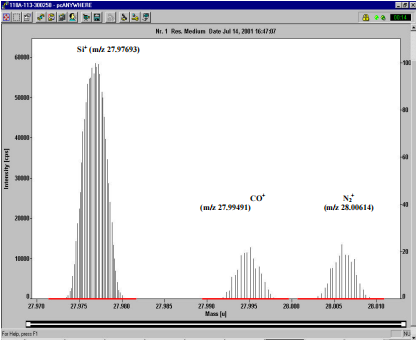The effects of ambient and dissolved oxygen concentration in UPW on native oxide growth were studied at room temperature using a HF-cleaned silicon (100) surface. The studies were focused on the initial stage of the surface oxidation immediately after the HF-cleaning. The silicon surfaces were exposed at a fixed duration to the UPW with different dissolved oxygen concentrations, open air, and dry nitrogen respectively. The SiO2 equivalent thicknesses of the native oxides formed on those surfaces were then measured and compared. The results obtained indicate that the ambient and the dissolved oxygen concentration in UPW dramatically affect the growth rate of the native oxide on the silicon surfaces. Decreasing the dissolved oxygen concentration in UPW and using an inert and dry ambient for the ultra-cleaning may reduce or eventually prevent the native oxide from growing on silicon surfaces. The SiO2 equivalent thicknesses of the native oxide formed on the silicon surfaces were characterized by a rapid acid extraction followed by a determination for extractable silicon in the acid. The determination of extractable silicon was accomplished by a high-resolution magnetic-sector mass spectrometer with inductively coupled plasma (ICP) as the ionization source. The analytical method developed has been demonstrated to be able to measure an oxide thickness on a silicon surface down to a monolayer range with a possible 0.1Å resolution.
The presence of interfacial native oxide on a silicon surface has widely been recognized as an impediment to the formation of high-quality ultra-thin gate, atomic layer epitaxy, and small metal contacts on the surfaces. Suppressing oxide growth during the surface cleaning and precisely controlling the interface prior to the advanced ULSI processes have become absolutely critical. This recognition has led to the considerable efforts of studying the mechanism of the native oxide growth and developing new measuring techniques that are capable of detecting the ultra-thin native oxide formed on a silicon surface.
The objective of this paper is to extend our previous studies of ultra-thin native oxide growth on a HF-cleaned silicon (100) surface and to refine the technique we used for the oxide thickness measurements. The previous studies dealt with the effects of the exposure time of a bare wafer to the UPW. The study showed that native oxide grows immediately during a UPW rinse. The growth rate was found to increase linearly with increasing exposure time during the first 10-minute of the rinse. The emphasis of this paper is however placed on the effects of the ambient and the dissolved oxygen concentration in UPW. The initial stage of the surface oxidation during the first 10-minute of the UPW rinse is still the focus. The authors believe that the initial surface oxidation may be closely related to the reaction mechanisms governing the initiation and kinetics of native oxide formation on silicon surfaces. The study of the initial surface oxidation is thereby of practical importance to better understand the mechanisms and to find the solutions to suppress the growth of native oxide during UPW rinse and storage processes.

Fig1
The results obtained in this work indicate that both the dissolved oxygen concentration and ambient dramatically affect the rate of the native oxide growth on the silicon surfaces. To reduce or prevent the native oxide growth during the UPW rinse and storage period, it is necessary to keep the dissolved oxygen concentration in the UPW as low as possible. It is also desirable to clean wafers in an inert and dry ambient such as a closed nitrogen environment. Perhaps the routine monitoring of the SiO2 equivalent thickness on a silicon surface after the rinse is, as a QC measure, an essential step to ensure the quality of the later ULSI processes on the surfaces. The thickness data generated using the analytical method described in this work may help the continuing efforts of modifying and optimizing the ultra-cleaning conditions so that a native oxide-free silicon surface can eventually be produced. The production of such an ideal interface shall help enhance the yields of the processes including but not limited to the high-quality ultrathin gate formation, the atomic-layer epitaxy deposition by ALCVD, and small metal contactholes formation.
The HR-ICP-MS was found to be a better tool for the low-level extractable Si determination and the ultra-thin native oxide thickness measurement. It is more sensitive than the ICP-OES we used in our previous studies and more reliable than a conventional quadruple based ICP-MS. By coupling the rapid acid-etching process developed in our laboratory with HR-ICP-MS, one can now provide a resolution of £ 0.1Å for the SiO2 equivalent thickness measurements. The method enables the precise and reliable measurements of the ultra-thin native oxides formed on a silicon surface within a monolayer range. As an independent method, it may also provide the data to correlate with the results produced by other techniques, such as ellipsometry in which the refractive index used is no longer a constant for the ultra-thin oxides being measured.
上一篇: 在制造过程中去除氮化硅和其他材料的方法
下一篇: 等离子体蚀刻MEMS结构的深度和轮廓控制